Artistry through the ages
WORDS BY Katie Jarvis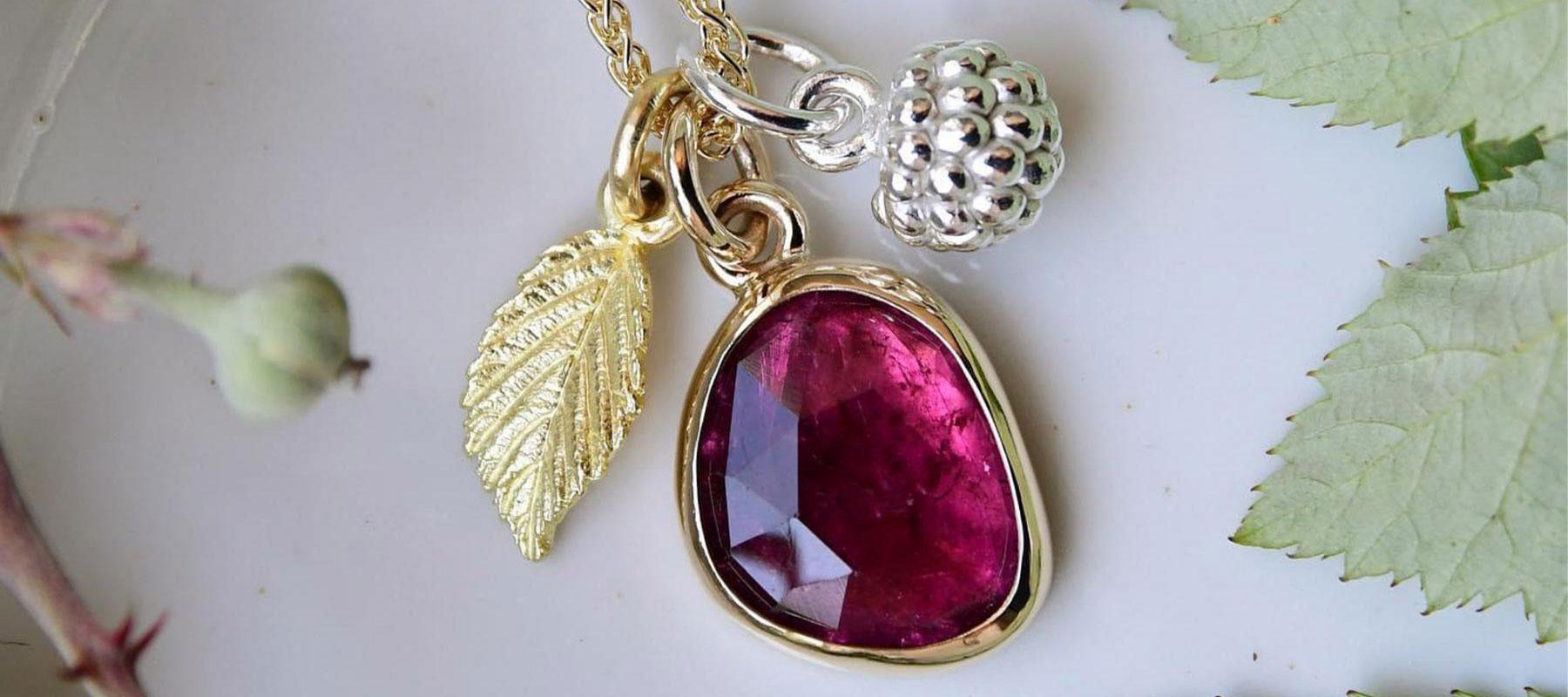
You might be looking for a piece of craftsmanship to mark a special occasion. A piece of silverware that will last not just your own lifetime, but 500 years into the future.
And perhaps you’re looking for something so intrinsic to the Cotswolds, it simply couldn’t be made anywhere else.
If you visit the Old Silk Mill in Sheep Street, Chipping Campden, you’ll have hit the spot. Here you’ll find Hart Silversmith, a team of craftsmen designing and making silverware and jewellery using methods unchanged over hundreds of years.
Walls are crammed with tools centuries old; there’s a forge in the corner, gas flame flickering. Craftsmen are tap, tap, tap, tapping, as you watch and listen – not so much beating silver into submission as cajoling, persuading; working to the tune of a metal that needs politely asking to create the sinuous shapes of their designs.

The workshop itself – which welcomes visitors – is a time-capsule. Around the ceiling, you can see ducts for electrical wires installed when Hart’s moved here in 1902 – the first place in Campden to get electricity. Even the original lights are still in use. (Though now with new wiring!) On the ceiling, what look like origami mobiles are actually paper receipts for work, some dating from the 1940s – still on the original spikes the craftsmen used to ‘file’ them.
 Commission a piece from here, and you’ll be invited to describe the design you’re after. Or, if you prefer, you can look through the 3,500 drawings Hart’s still has from an archive of the past 100 years. Customers can pick and choose different elements, or go for an accurate remake, such as a wine decanter in glass and silver, an original of which is on display in the V&A.
Commission a piece from here, and you’ll be invited to describe the design you’re after. Or, if you prefer, you can look through the 3,500 drawings Hart’s still has from an archive of the past 100 years. Customers can pick and choose different elements, or go for an accurate remake, such as a wine decanter in glass and silver, an original of which is on display in the V&A.
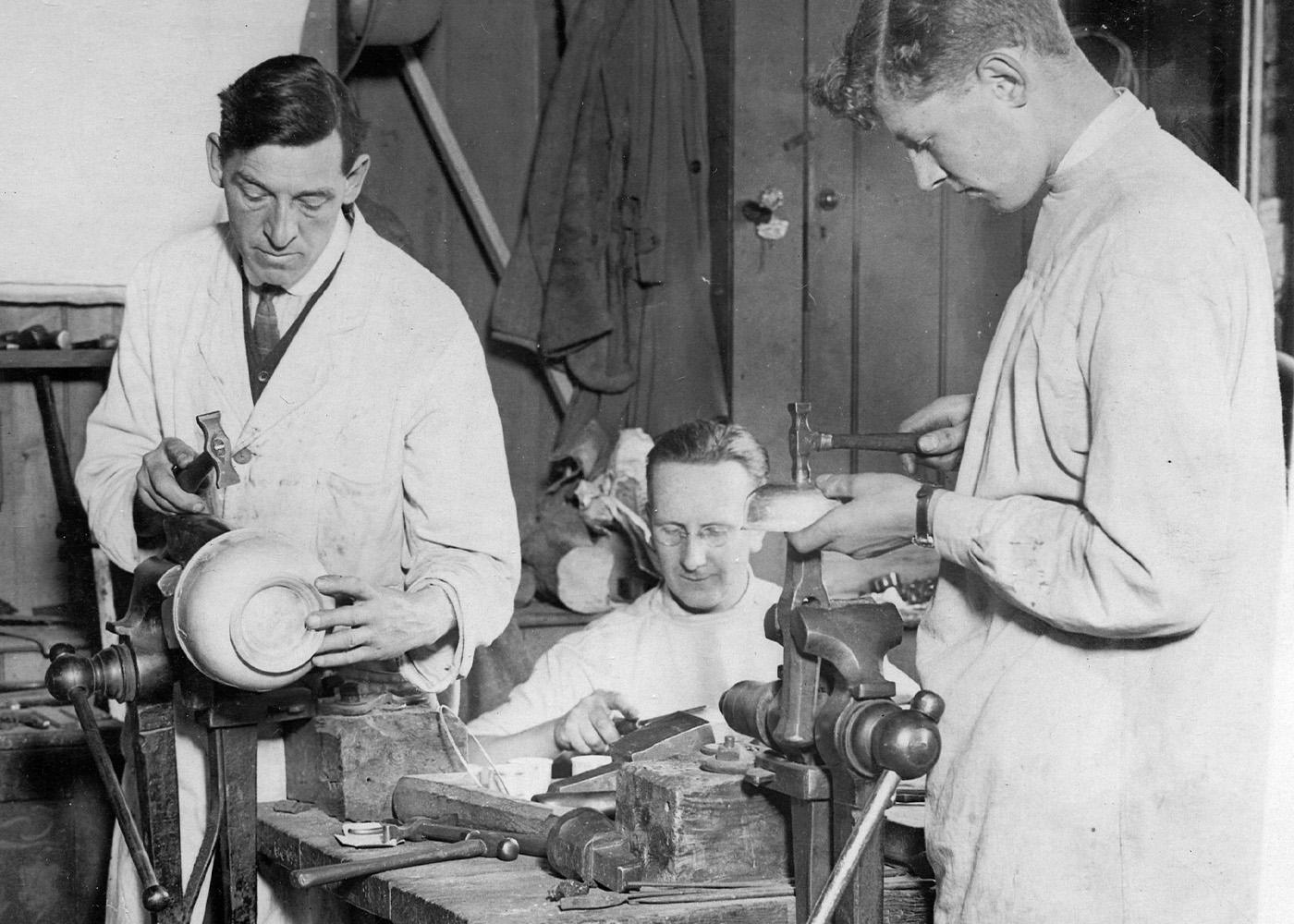 Julian Hart, one of four silversmiths, is a descendant of George Hart who set up the workshop here in 1902. George – a skilled craftsman in metal – was invited to move to Chipping Campden by Charles Robert Ashbee, a proponent of the Arts and Crafts Movement. Ashbee had turned his back on mass production; instead, he supported those craftsmen who were being put out of work by mills and factories. As a result, he set up the Guild and School of Handicraft in 1888.
Julian Hart, one of four silversmiths, is a descendant of George Hart who set up the workshop here in 1902. George – a skilled craftsman in metal – was invited to move to Chipping Campden by Charles Robert Ashbee, a proponent of the Arts and Crafts Movement. Ashbee had turned his back on mass production; instead, he supported those craftsmen who were being put out of work by mills and factories. As a result, he set up the Guild and School of Handicraft in 1888.
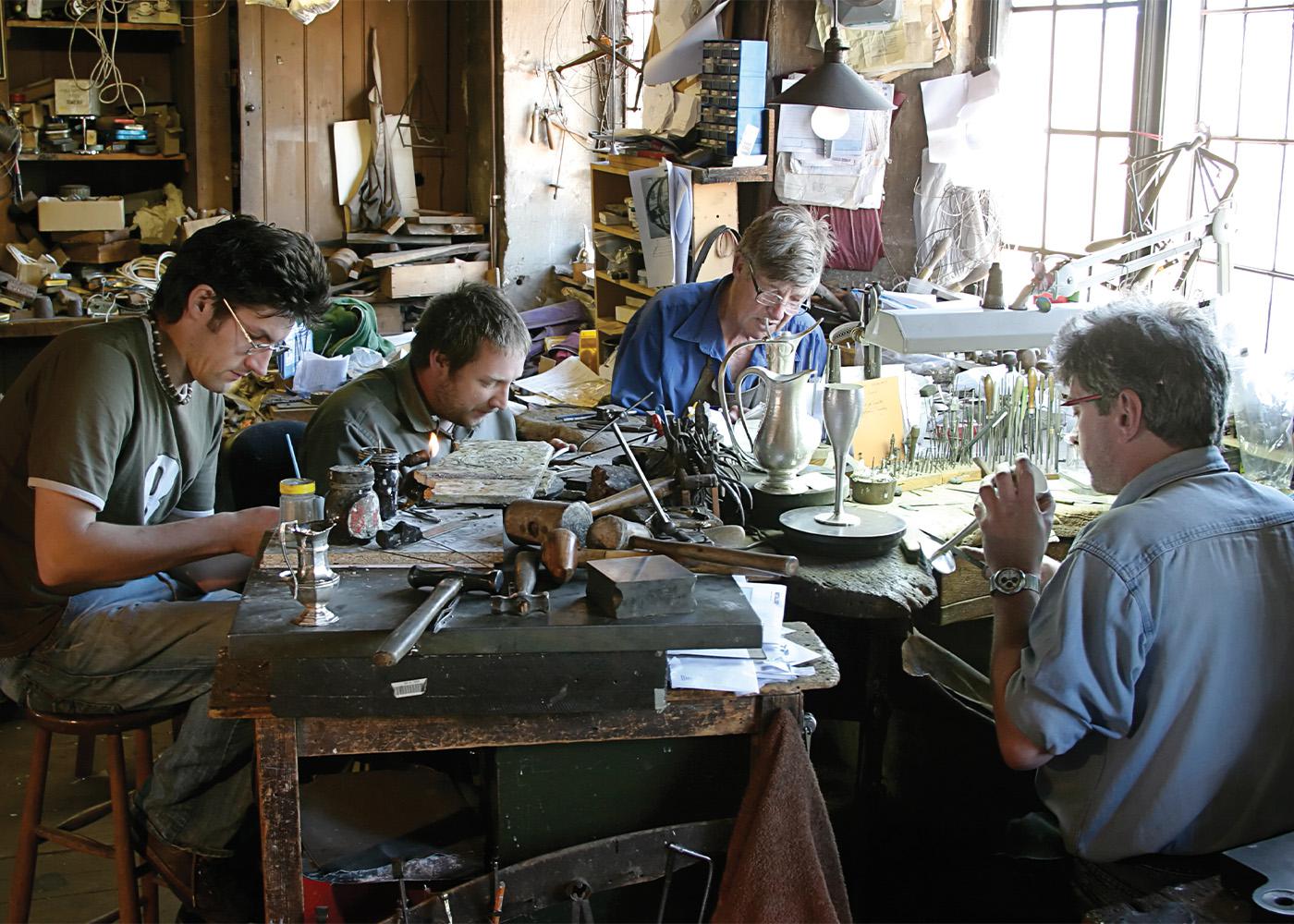 Today, the workshop you see is the last operating remnant of that guild.
Today, the workshop you see is the last operating remnant of that guild.
Julian and the team – who share a workshop but work individually on projects with clients – produce modern and original designs via the processes those original craftsmen used; the same Arts and Crafts principle of working by hand.
 This butter knife, which Julian has recently made for a client, took three days to complete and takes its form from a 1906 catalogue. Today, its price of £395 is comparatively far less than the one pound, seven, and six those first buyers would have paid.
This butter knife, which Julian has recently made for a client, took three days to complete and takes its form from a 1906 catalogue. Today, its price of £395 is comparatively far less than the one pound, seven, and six those first buyers would have paid.
‘It’s a simple butter-knife-shaped blade, but the handle has five wires that twist around a central bead. The end of the handle will be set with a gemstone – in this instance, a green agate that was popular at the time,’ Julian says.
‘That twisted wire handle is something that’s not easy to make by machine; you’ve got to make it by hand.
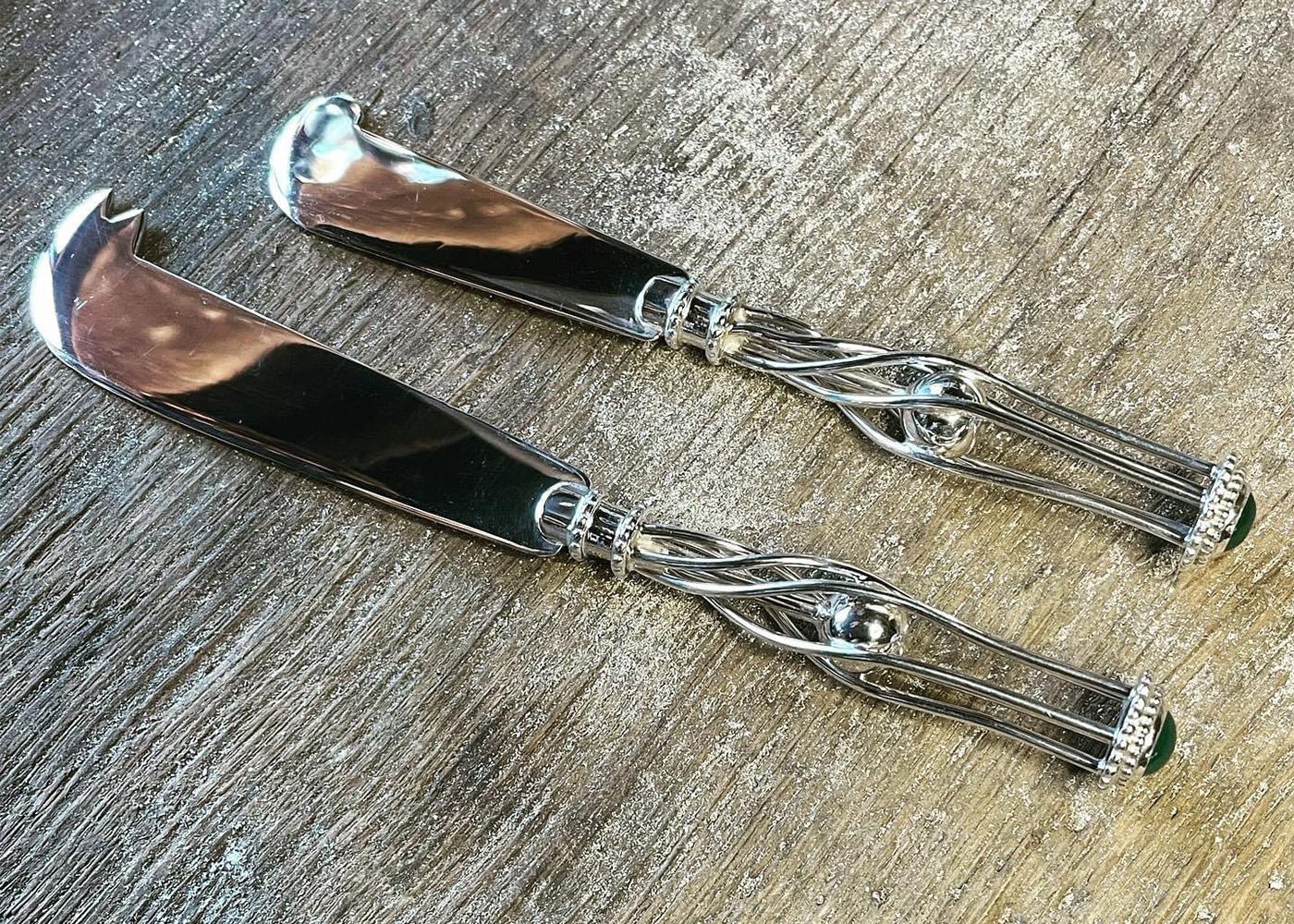
‘It is beautiful to look at, but it was also designed for purpose; to be nice to use.’
One came up at auction recently – contemporary with the catalogue – and sold for £6,000. ‘That would have been bought by a collector,’ Julian says. ‘The one I have made was bought by someone who likes Arts and Crafts and wants to use it.’
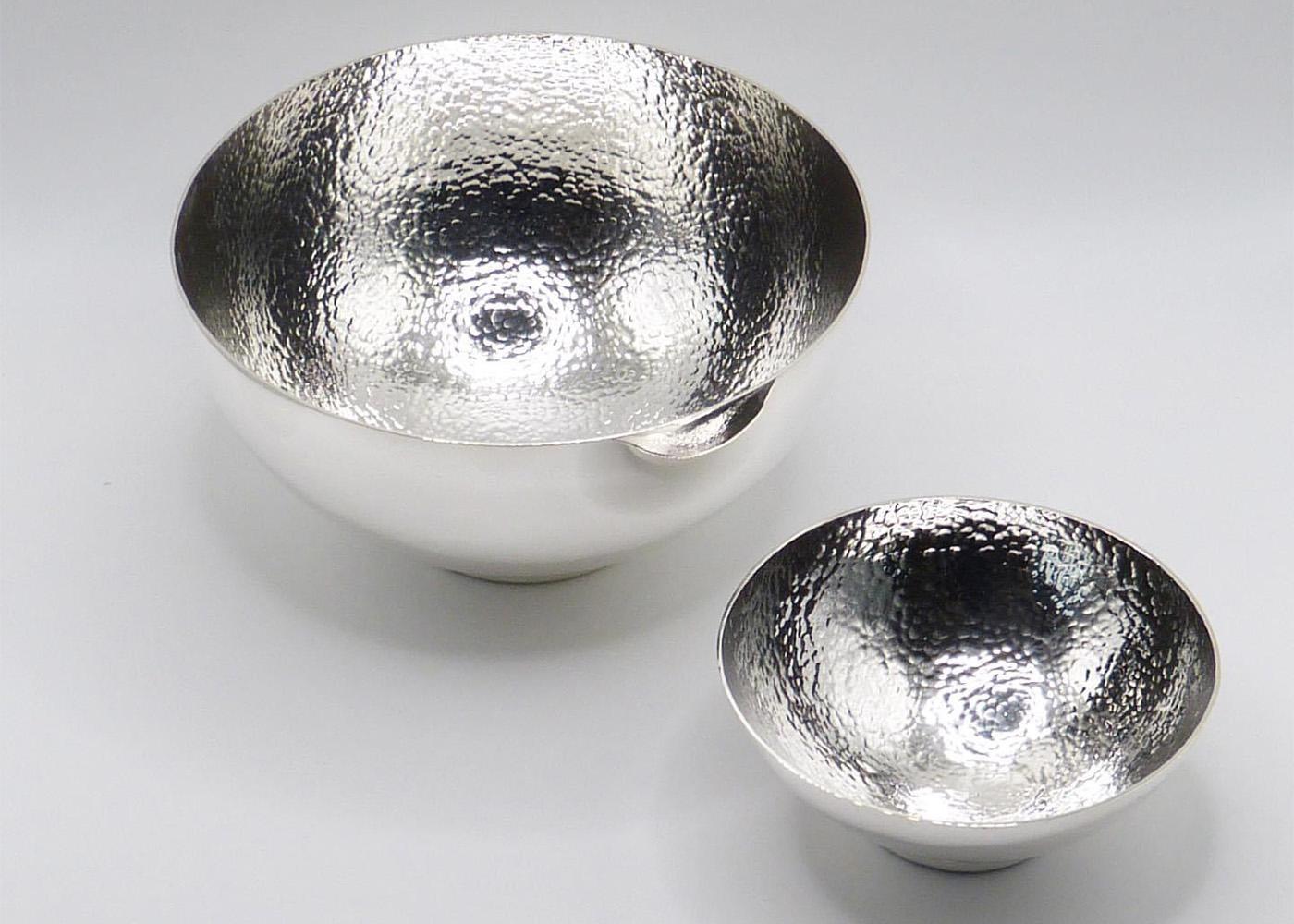 Silver is a metal that dictates its own working pattern.
Silver is a metal that dictates its own working pattern.
‘It’s very forgiving; it works at two speeds and that’s ‘slow’ and ‘stop’. When you are forming the metal, you can only shape it so far at a time before it loses pliability.
It’s worked cold. As you hit it with a hammer, you compress the metal and it becomes rigid. Then you have to heat it up, which relaxes the molecules, meaning you can push it a bit further. It’s this repeated process.’
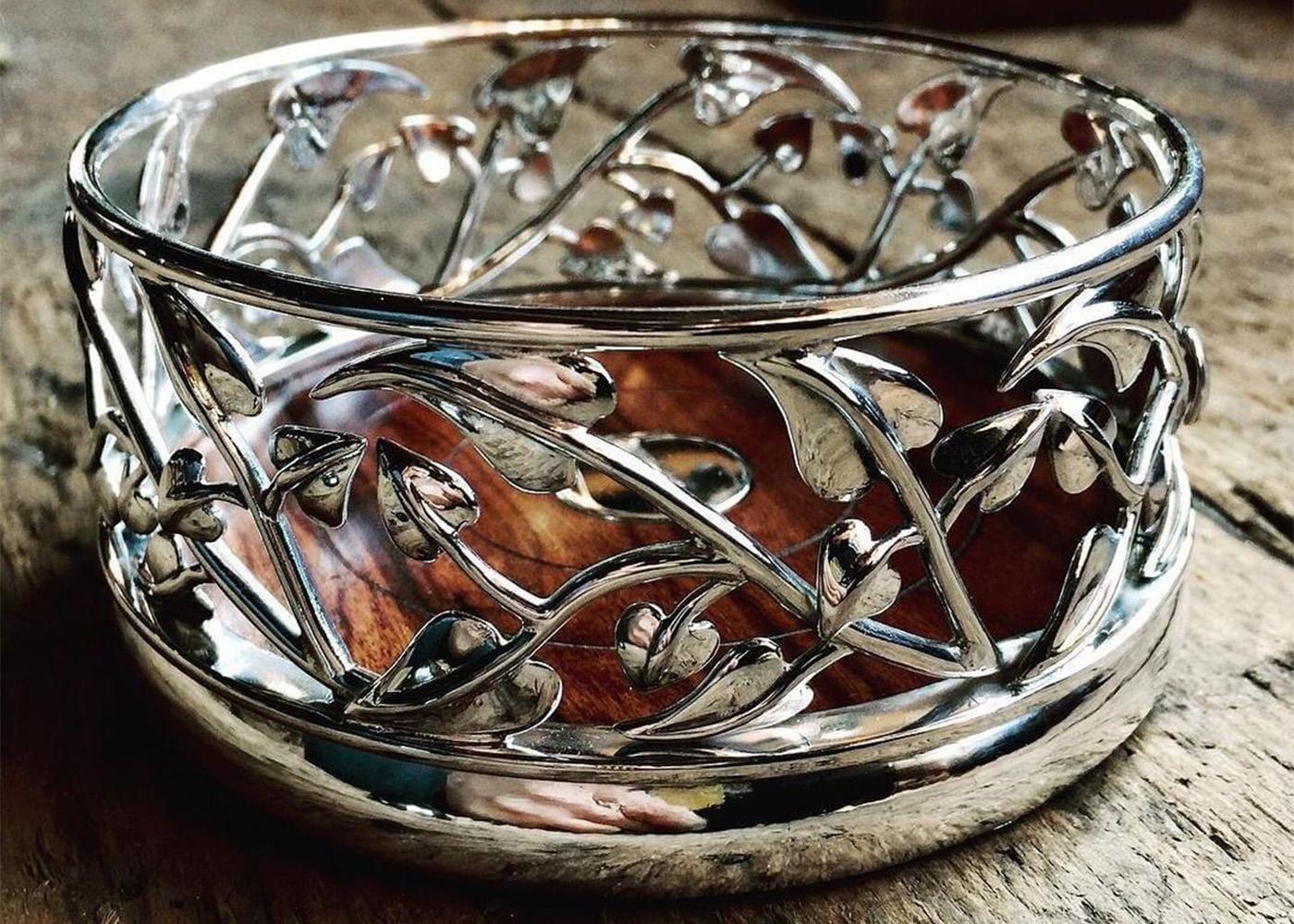 A pair of water jugs is another commission Julian is currently undertaking, based on a Danish Geog Jensen design. Taking 10 days to make, each jug will cost around £3,000.
A pair of water jugs is another commission Julian is currently undertaking, based on a Danish Geog Jensen design. Taking 10 days to make, each jug will cost around £3,000.
Although traditional tableware – once a mainstay of Hart’s – is now falling out of fashion, it’s only the type of product that has changed. Decanters, wine goblets, coasters and tumblers have replaced teapots, milk jugs, and sugar bowls, through orders from all over the world.
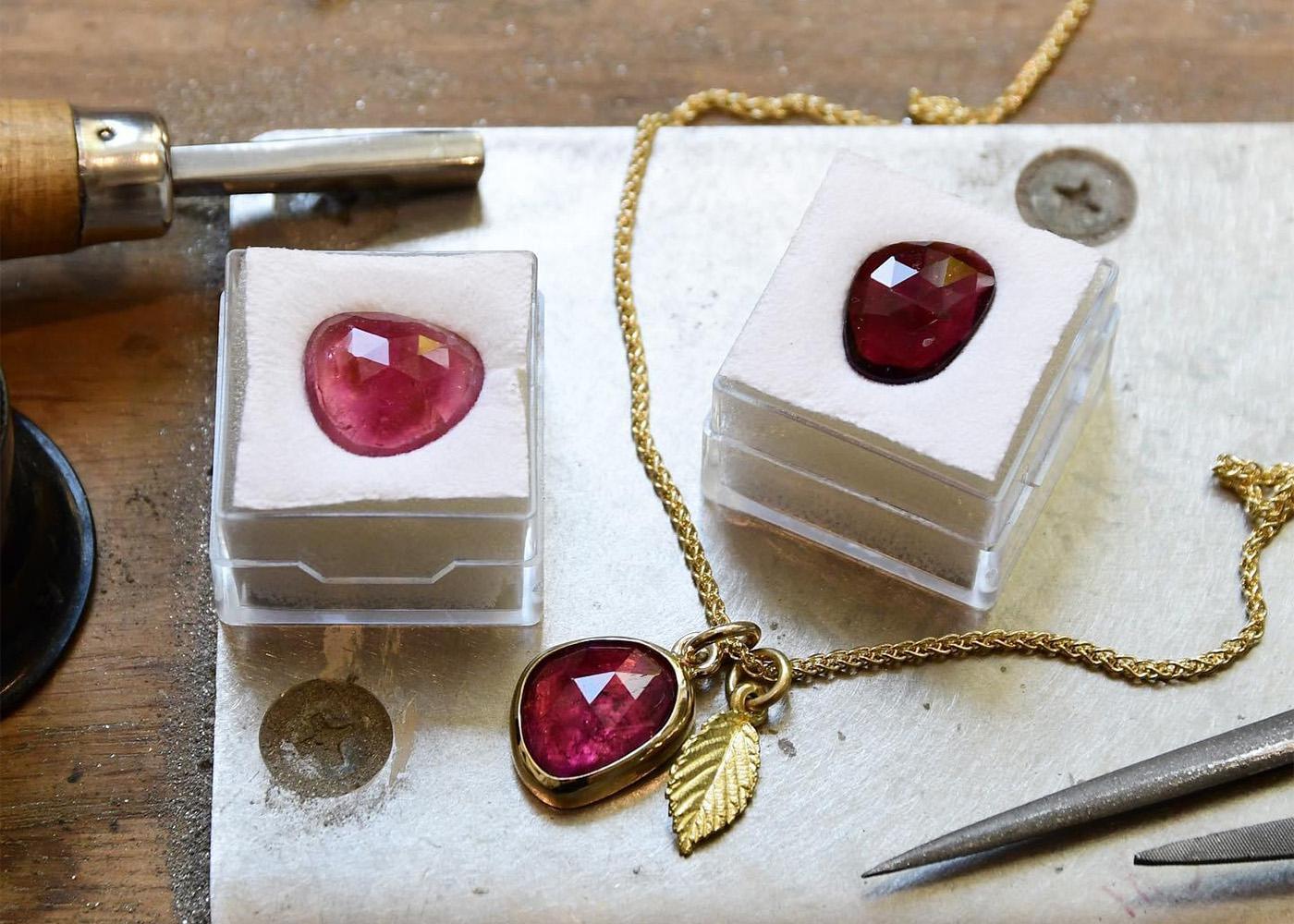 Caroline Richardson, Julian’s partner, also works on-site, creating beautiful bespoke, contemporary jewellery. ‘There’s a tendency in this day and age always to want the latest thing, whereas these are objects that last forever,’ Julian says. ‘There’s no reason why some of the things made 100 years ago won’t still be around in 500 years’ time. The difference between handmade and machine-made is that the former has a much heavier weight of silver; they’re made more robustly, more solidly. They don’t wear out.’
Caroline Richardson, Julian’s partner, also works on-site, creating beautiful bespoke, contemporary jewellery. ‘There’s a tendency in this day and age always to want the latest thing, whereas these are objects that last forever,’ Julian says. ‘There’s no reason why some of the things made 100 years ago won’t still be around in 500 years’ time. The difference between handmade and machine-made is that the former has a much heavier weight of silver; they’re made more robustly, more solidly. They don’t wear out.’
 Hart’s also holds evening classes, teaching the art of silversmithing to anyone interested. ‘Originally, the guild started off as a school where well-to-do lawyers could go to night classes and learn crafts; but, very quickly, orders started coming in and the work took over. In other words, there was always teaching alongside making and, today, we still do evening classes.’
Hart’s also holds evening classes, teaching the art of silversmithing to anyone interested. ‘Originally, the guild started off as a school where well-to-do lawyers could go to night classes and learn crafts; but, very quickly, orders started coming in and the work took over. In other words, there was always teaching alongside making and, today, we still do evening classes.’
Hart Silversmith is at the Guild of Handicraft, Sheep Street, Chipping Campden GL55 6DS; 01386 841100; hartsilversmiths.co.uk
Insider tip: Make sure you’ve plenty of time to look round this fascinating place; the Old Silk Mill features other craftspeople and designers, too. The guild is a short walk from the town centre car park in the town square (first 20 minutes free; you’ll need a credit card or app for up to two hours as the machines don’t accept cash). You’ll often find on-street parking for free during less busy times, especially if you’re prepared to walk a little way.
SHARE:

